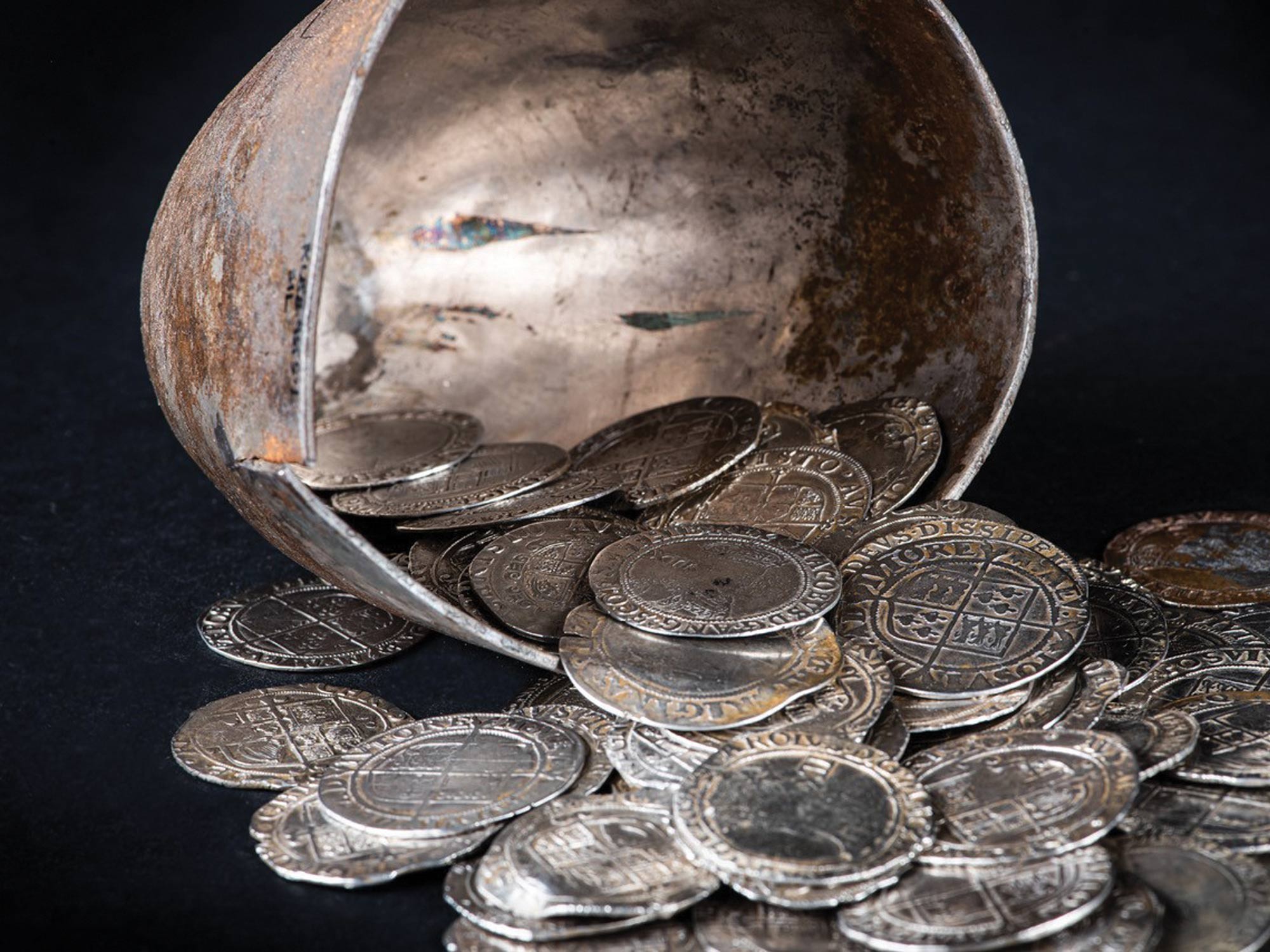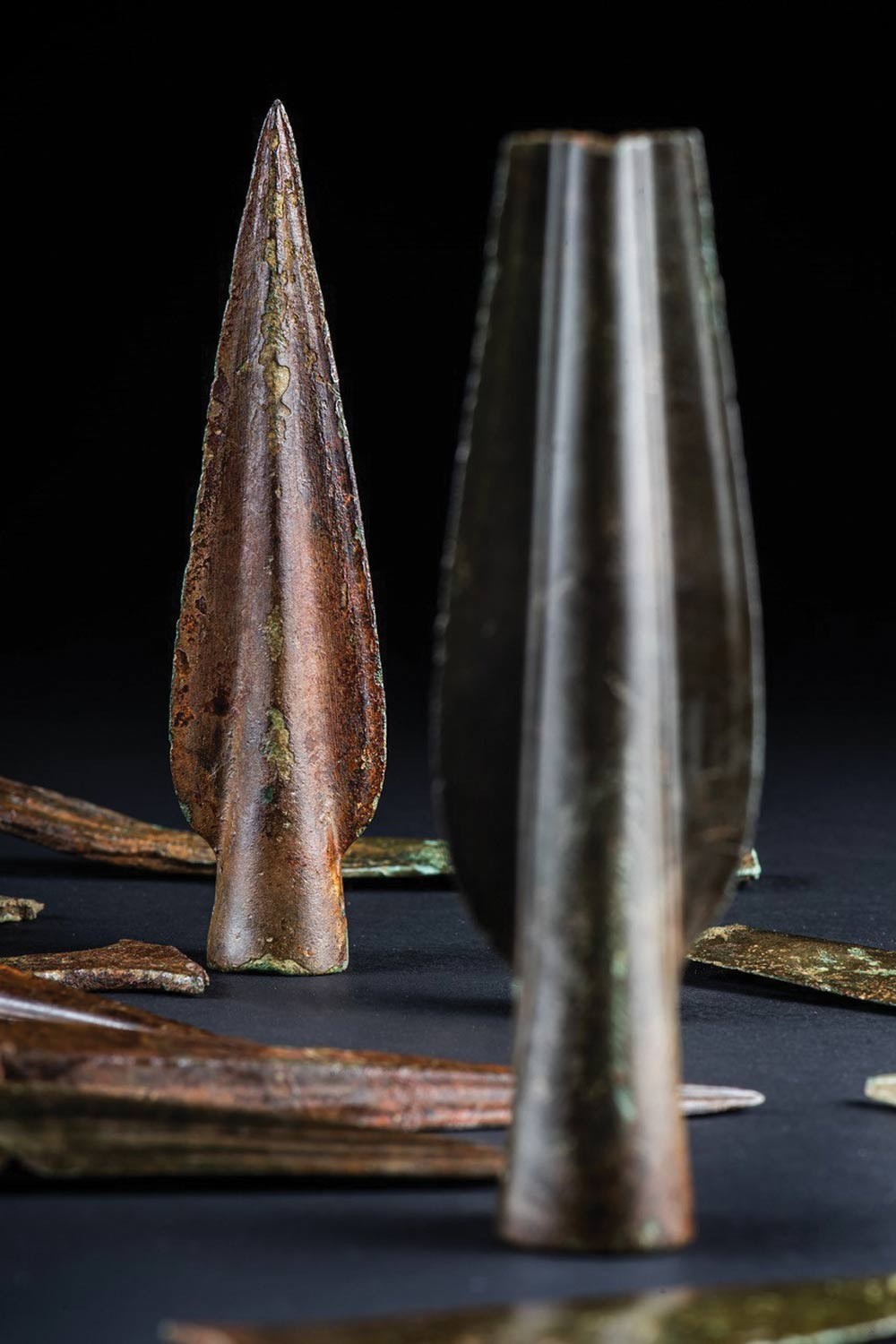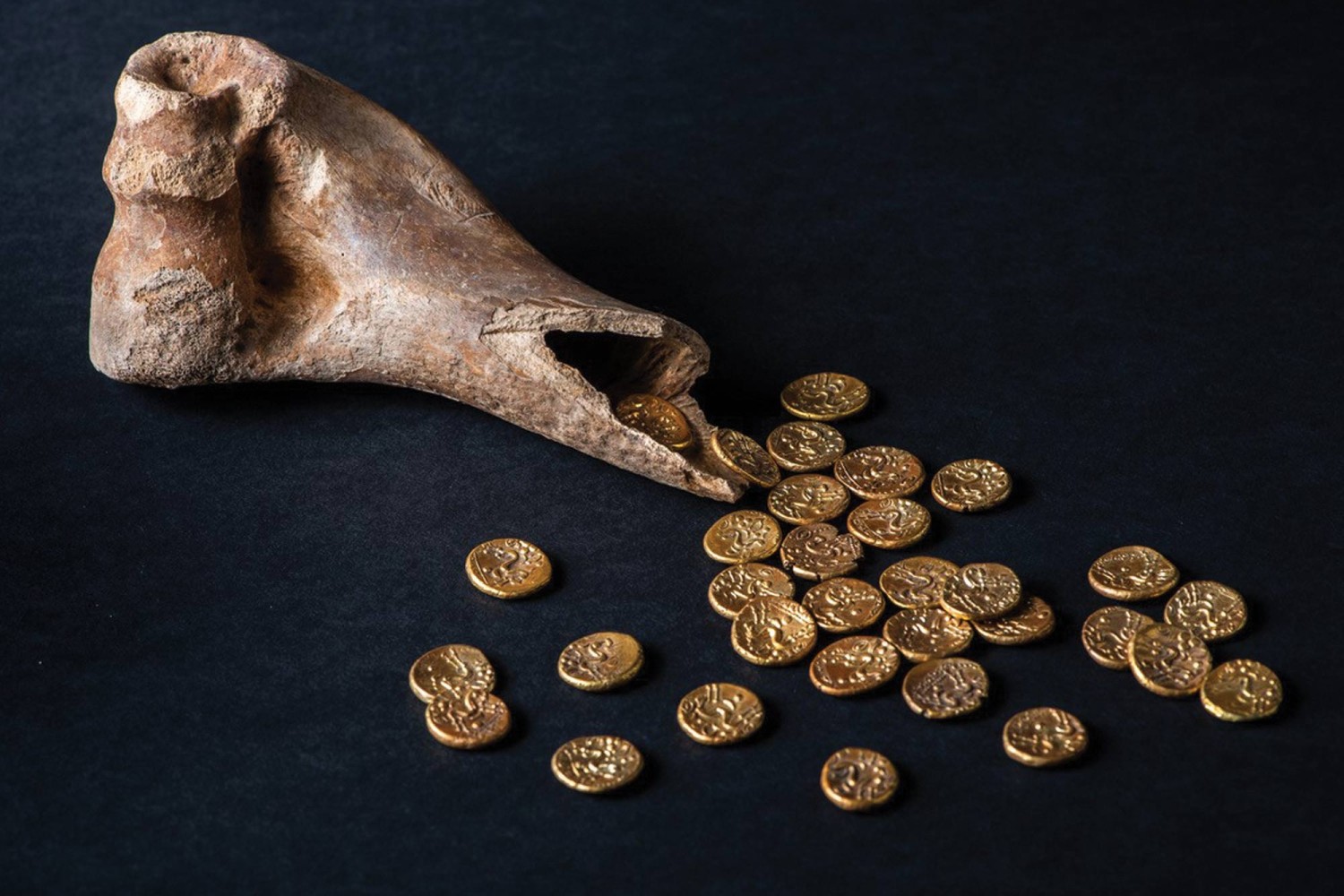
Exploring Norfolk’s historic hidden hoards
Norfolk is thought to be one of the most archaeologically important places in Britain, with thousands of fascinating finds recorded in the last decade alone. In an exciting exhibition, Lynn Museum is showcasing a timeline of buried treasures…
Having seen a wealth of ground-breaking discoveries, Norfolk is renowned for its incredibly rich and varied history, though few of us realise just how important that history is.
Found embedded in a cliff face in 1990, the West Runcton Mammoth is the oldest and most complete Steppe Mammoth skeleton to be discovered in the world. Ten years later, the 500,000 year old ‘Happisburgh Handaxe’ was unearthed by a beachcomber in North Norfolk, and just over a decade onwards, the very same stretch of sand revealed the oldest human footprints ever seen outside of Africa.
Seven years ago our amazing county saw the highest number of recorded archaeological finds and treasure caches in the entire country, with over 15,000 discoveries and 119 official Treasure cases in a 12-month period. To celebrate some of the area’s many extraordinary finds, Lynn Museum have launched an exciting new exhibition entitled Hoards: Archaeological Treasures from West Norfolk.
Bringing together a glittering display of enthralling finds dating from the Bronze Age through to the English Civil War, the exhibition highlights the history of archaeological hoards in Norfolk and explores reasons behind their burial. It features everything from ancient coins, weapons, and precious pieces of jewellery to a stunning replica of the Great Torc from the famous Snettisham Treasure.
“We’re embracing this opportunity to place a spotlight on some of our current exhibits, showcase incredible collections we had tucked away, and reveal a few of our remarkable recent acquisitions – many of which are being displayed for the first time,” says Curator Oliver Bone. “This special patch of Norfolk is one of the most important places for hoards in the country - we still can’t be certain of why, as there’s so much mystery surrounding their burial and a great deal we’re yet to discover. Every treasure has its own unique story to tell and studying them can help us paint a picture of the past.”
The exhibition’s earliest hoard is a collection of axe heads dating from the Middle Bronze Age (about 3,400 years old), which were found on the beach at Holme-next-the-Sea – close to the location of the famous 4,000-year-old timber monuments Seahenge and Holme II. Following an intriguing timeline of discovery, the exhibition moves on to explore finds of the later Bronze Age including a rare hoard of fragmented weapons from Fincham, before reaching the spectacular Snettisham Hoard.
Comprising of several discoveries made in and around the village from 1948, the Snettisham Treasure is the largest assemblage of Iron Age bronze, silver, and gold artefacts found in Europe. It consists of torcs, coins, ingots and other astonishing objects - with the most sensational single item being the exquisitely worked Great Torc, unearthed when ploughing a field in 1950. Now held at the British Museum, it’s considered one of the most elaborate golden objects crafted in the ancient world – and when the BBC produced a documentary about the 10 most important discoveries ever made in the country, it was number four on the list.
“Torcs are stunning ancient treasures which have been retrieved from Iron Age sites across Britain, though more have been found in Norfolk than in any other county,” says Oliver. “We have a modern copy of the Great Torc in our Snettisham Hoard display to give visitors an insight into the significance of this amazing discovery.”
Another important Iron Age find is the Sedgeford Hoard, which permanently lives at Lynn Museum and is one of their star exhibits. Made up of 32 gold coins, this curious collection was found hidden inside a cow bone during an archaeological dig in Sedgeford in 2003. The coins, known as staters, were made by the Ambiani tribe of Gaul in Northern France, who gave them to Britons as payment for their help fighting against the Romans.

“There are two main theories behind the burial of the coins,” says Oliver. “One is that they were offered as a gift to the gods when British soldiers fled back to East Anglia, with the owner giving them up to show gratitude for a safe journey. The other is that they were hidden with the intention of future retrieval, however the owner may have died or couldn’t remember where they were stashed - so the treasure remained hidden for 2,000 years.”
The exhibition goes on to showcase a wealth of other Iron Age wonders before exploring Roman, Anglo Saxon and Viking, and Medieval hoards. The astounding timeline finishes with the later Dersingham Hoard, which consists of 129 silver shillings and the silver cup they were found in, likely buried during the siege of King’s Lynn in the English Civil War.
“Some incredible discoveries have been made in Norfolk over the years, and we’re thrilled to have this chance to share some spectacular secrets of its past,” says Oliver. “People can come and experience the enthralling human story behind the burial and recovery of each artefact and learn about the remarkable societies that came before our own.”
Mysterious and magnificent, these fascinating finds are transforming our understanding of the past – and who knows what will be unearthed next?

IMAGES: Lynn Museum (Norfolk Museums Service)
